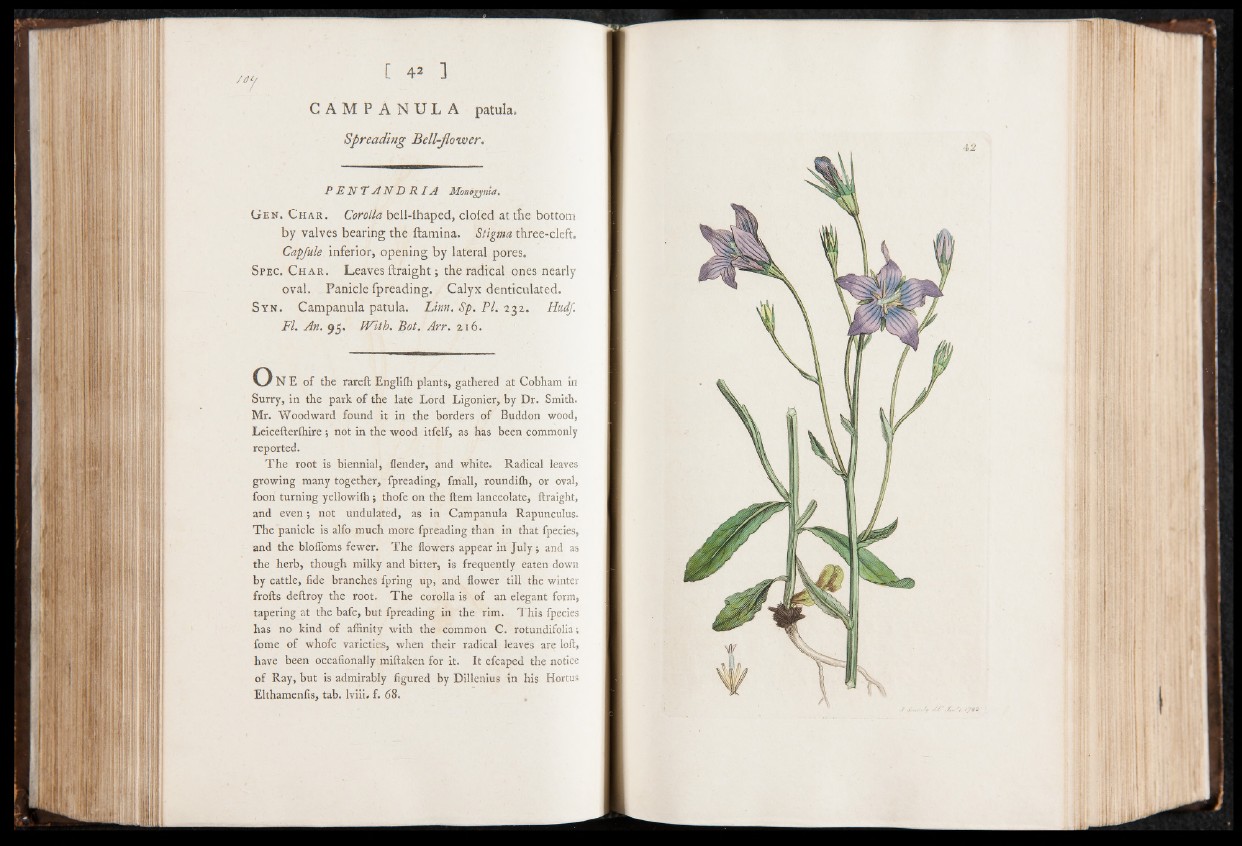
/ôl/
/
P E N T AND R I Â Monàgynià,
G e n . C h a r . Corolla b e ll- lh ap ed , c lo fed at ttie bottom
b y v a lv e s b e a r in g the ftamina. Stigma three-cleft.
Capjule in fe rio r , o p en in g b y lateral pores.
S p e c . C h a r . L e a v e s ftra igh t ; the radical ones nearly
o v a l. P a n ic le fp r e a d in g . C a ly x d en ticu la ted .
S y n . C am p an u la p atula . Linn. Sp. PI. 2 3 2. Hudf.
FI. An. 9 5 . With. Bot. Arr. 2 16 .
O N E of the rareft Englifli plants, gathered at Cobham in
Surry, in the park of the late Lord Ligonier, by Dr. Smith.
Mr. Woodward found it in the borders of Buddon wood,
Leicefterfhire ; not in the wood itfelf, as has been commonly
reported.
The root is biennial, flender, and white. Radical leaves
growing many together, fpreading, fmall, roundilh, or oval,
foon turning yellowilh ; thofe on the Item lanceolate, ftraight,
and even; not undulated, as in Campanula Rapunculus.
The panicle is alfo much more fpreading than in that fpecies,
and the blofloms fewer. The flowers appear in July 5 and as
the herb, though milky and bitter, is frequently eaten down
by cattle, fide branches fpring up, and flower till the winter
frofts deftroy the root. The corolla is of an elegant form,
tapering at the bafe, but fpreading in the rim. This fpecies
has no kind of affinity with the common C. rotundifolia;
fome of whofe varieties, when their radical leaves are loft,
have been occafionally miftaken for it. It efcaped the notice
of Ray, but is admirably figured by Dillenius in his Hortus
Elthamenfis, tab. lviii. f. 68.